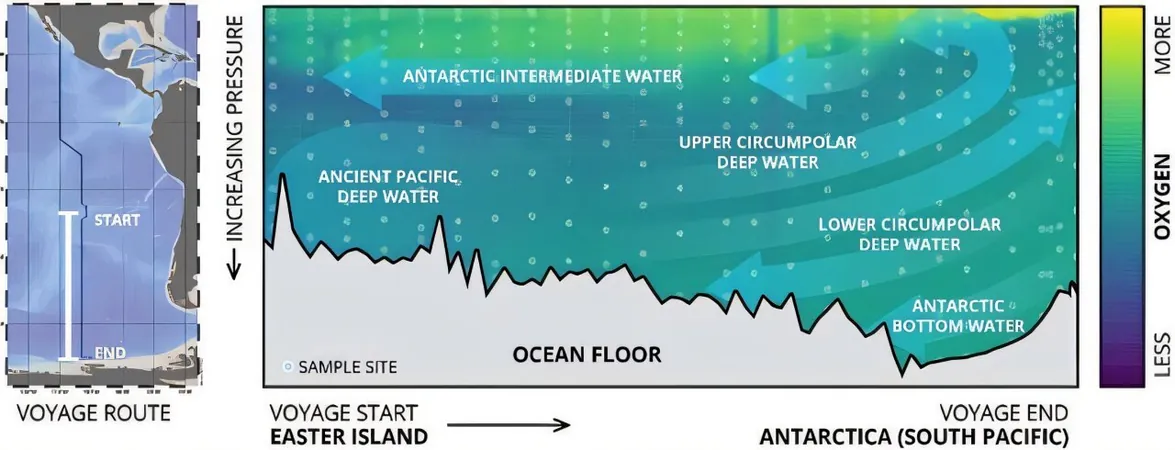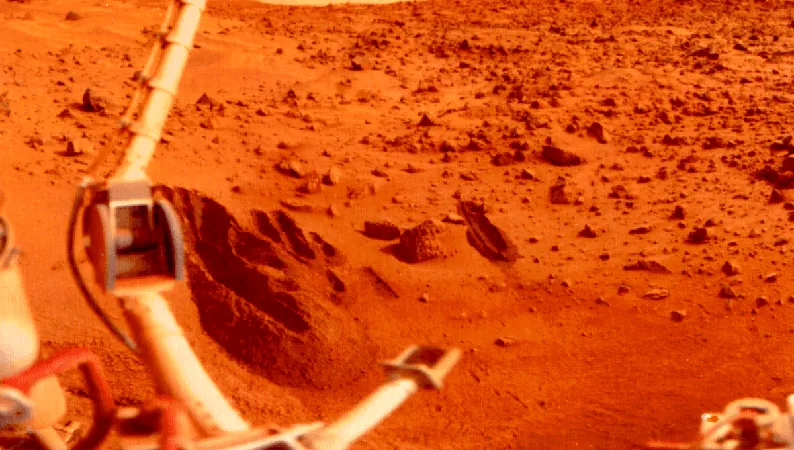
Unlocking the Secrets of the Deep: How Ocean Currents Shape Microbial Life in the South Pacific
2025-07-14
Author: Charlotte
Revolutionary Findings in Microbial Oceanography
A groundbreaking study published in *Science* has revealed the crucial impact of deep ocean currents, specifically the global overturning circulation, on the diversity and functionality of microbial life throughout the South Pacific Ocean. This research, spearheaded by experts from the J. Craig Venter Institute, UC San Diego's Scripps Institution of Oceanography, and UC Berkeley, provides the most comprehensive genetic mapping of microbial communities influenced by these oceanic forces.
Unveiling the Depths of the Ocean
According to the lead author of the study, Bethany Kolody, a postdoctoral researcher at UC Berkeley, winds and storms only affect the upper 500 meters of the ocean, far less than the 4,000-meter depths studied. Below this, currents are shaped by variations in water temperature and salinity, creating a colossal 'conveyor belt' that transports both water and its microbial inhabitants over vast distances. Kolody states, "We can now confirm that these water masses serve as distinct microbial ecosystems."
A Methodical Approach to Ocean Sampling
The research team meticulously gathered over 300 water samples from a transect stretching from Easter Island to Antarctica, reaching the ocean's full depth. Employing advanced metagenomic and metabarcoding techniques, they reconstructed genomes for more than 300 microbes, uncovering tens of thousands of additional species through molecular fingerprinting methods that examined conserved genes.
The Surprising Microbial Diversity Drop-Off
Remarkably, the study identified a significant increase in microbial diversity at around 300 meters below the surface, in a region termed the "prokaryotic phylocline." This layer represents a transition from the low-diversity upper waters to the nurturing microbial communities of the deep ocean.
Six Distinct Microbial Cohorts Identified
The study, released on July 10, classified six distinct microbial "cohorts." Three were aligned with specific depths, while the others corresponded to major water masses: Antarctic Bottom Water, Upper Circumpolar Deep Water, and ancient Pacific Deep Water. Each cohort exhibited its unique assortment of microbial species equipped with functional genes tailored to their environmental conditions.
For instance, the Antarctic Bottom Water cohort thrives in cold, high-pressure conditions and possesses genes that aid in membrane fluidity and stress resistance. Conversely, the ancient water cohort, isolated from the surface for over a millennium, features microbes capable of surviving in low-oxygen environments and breaking down complex carbon compounds.
Mapping Functional Potential of Microbial Life
Beyond just cataloging species, the researchers also explored the functional capabilities of these microbial communities, identifying ten distinct "functional zones" characterized by metabolic genes essential for survival. Notably, surface zones excelled in light harvesting and nutrient acquisition, while deeper zones specialized in decomposing complex organic materials and enduring harsh environmental conditions.
Impact on Climate Change and Ocean Health
Microbes play a vital role as engines of the ocean's carbon cycle, converting carbon dioxide into organic compounds and facilitating nutrient recycling and carbon sequestration. Understanding how ocean circulation shapes these communities is vital as climate change threatens to alter these intricate processes.
Andrew Allen, senior author of the study, emphasizes, "This research establishes a baseline for understanding microbial ecosystems under current ocean conditions. As climate change impacts the global overturning circulation, the distribution and functionality of these communities may shift, posing unpredictable risks to global carbon cycling."
A Call for Comprehensive Ocean Monitoring
By integrating genomic insights with physical and chemical ocean measurements, researchers aim to develop a global atlas of ocean life, crucial for conserving our planet's largest ecosystem. Allen concludes, "This study highlights that life in ocean ecosystems is regulated by fundamental patterns and processes we are just beginning to unveil. Interdisciplinary collaboration among physical oceanographers, biological oceanographers, and genomicists is key to further discoveries."
The authors advocate for including molecular sampling in global ocean monitoring initiatives like GO-SHIP, a vital step toward understanding and preserving marine biodiversity.









 Brasil (PT)
Brasil (PT)
 Canada (EN)
Canada (EN)
 Chile (ES)
Chile (ES)
 Česko (CS)
Česko (CS)
 대한민국 (KO)
대한민국 (KO)
 España (ES)
España (ES)
 France (FR)
France (FR)
 Hong Kong (EN)
Hong Kong (EN)
 Italia (IT)
Italia (IT)
 日本 (JA)
日本 (JA)
 Magyarország (HU)
Magyarország (HU)
 Norge (NO)
Norge (NO)
 Polska (PL)
Polska (PL)
 Schweiz (DE)
Schweiz (DE)
 Singapore (EN)
Singapore (EN)
 Sverige (SV)
Sverige (SV)
 Suomi (FI)
Suomi (FI)
 Türkiye (TR)
Türkiye (TR)
 الإمارات العربية المتحدة (AR)
الإمارات العربية المتحدة (AR)